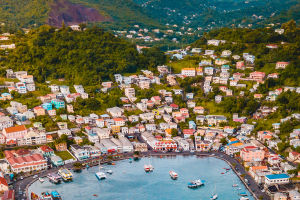Friends, ready to plunge into cobalt waters where swaying corals form underwater cathedrals and sea creatures dance in silent harmony? Off Mexico’s eastern shore, Cozumel beckons divers with crystal clarity—often 60–100 ft visibility—within Parque Nacional Arrecifes de Cozumel.
This guide navigates seasonal peaks, prime dive sites, and essential logistics like costs, gear rentals, and transit times. Gear up for a journey that blends adrenaline, marine biodiversity, and expert insights.
Reef Majesty
Home to a stretch of the 1,000 km Mesoamerican Barrier Reef, Cozumel’s marine park safeguards over 500 fish species and vibrant coral outcrops. Protected since 1996, the dive zones are patrolled by park rangers, with mandatory park fees of $10 per diver per day, payable at the dock. Certified PADI instructors staff more than 30 local dive shops, offering guided drift dives along sweeping coral walls from 9 a.m. to 4 p.m. Dive flags mark entry points, ensuring safety in busy channels.
Best Seasons
Water temperatures linger between 78°F and 82°F year‑round, so 3 mm wetsuits suffice for most divers. Peak visibility—up to 120 ft—occurs January through March, when sharks patrol the deeper reefs. From July to August, eagle rays glide gently over plate corals under midday sun, while hurricane season (July–October) brings occasional dive cancellations; most operators close on storm alerts. Booking dives at least two weeks in advance secures slots during high season.
Top Sites
Cozumel boasts over 20 named dive sites, ranging from 3 m beginner reefs to 36 m walls for advanced explorers. Entry‑level spots like Chankanaab Park offer gentle slopes and calm waters for introductory dives ($90 for two‑tank morning package including boat). For intermediate divers, Tormentos Reef features sandy ledges dotted with finger corals and resident sea turtles. Operators run AM and PM boats, boarding at 7 a.m. and 12:30 p.m., each lasting about three hours.
Palancar
Palancar Gardens wins raves for its dense coral forests and swim‑throughs at 12–24 m depths. Daily two‑tank trips depart at 8 a.m. and 1 p.m., priced around $95 per diver, including all weights and tanks. Gibraltar Cut, within the same reef, hosts playful southern stingrays and schooling horse-eye jacks coursing through underwater canyons. This site’s gentle drift current carries divers leisurely along sculpted coral pinnacles.
Columbia
Columbia Wall plunges dramatically to 36 m, offering adrenaline‑charged wall dives that reveal massive barrel sponges and gorgonian sea fans. Certified advanced divers (minimum Advanced Open Water certification) can arrange two‑tank dives for about $100, with max depths verifying nitrogen limits on dive computers. Look for nurse sharks and occasional spotted eagle rays patrolling the ledges. Surface intervals happen on tender boats anchored safely offshore.
Night Dives
Under torchlight, San Clemente Reef transforms into a nocturnal theater of lobsters, and sleeping parrotfish. Night dive trips—$60 per diver—depart local marinas at 7 p.m., lasting roughly 90 minutes with one tank. Glow of headlamps reveals elusive arrow hunting eels weaving through coral rubble. Many dive shops supply red‑filtered lights to preserve night vision and marine behaviors.
Expenses
Expect to spend $90–$100 for two‑tank boat dives, with rental gear packages at $20–$25 per day. Entry‑level courses start at $80 for Discover Scuba sessions, while full Open Water certifications range $350–$400 over three days. Park fees ($10/day) and tip recommendations (10–15% of dive package) add marginal costs. Dives often include snacks and bottled water; fuel surcharges of $5 may apply on windy days.
Accommodations
Cozumel lodging suits all budgets: beachfront hostels offer dorm beds from $18 per night with shared kitchens and 8 a.m. check‑in. Mid-range hotels like Hotel Playa Azul charge $80–$120 nightly for ocean-view rooms, airport shuttle, and dive shop partnerships. Luxury resorts such as The Westin Cozumel start at $200, offering dive packages, equipment storage, and private piers.
Booking 30 days ahead often unlocks complimentary breakfast or gear rental credits.
Getting There
Cozumel International Airport (CZM) handles direct flights from Houston, Dallas, and Miami, with taxi rides to town averaging $15 and taking 10 minutes. Alternatively, Cancun International Airport (CUN) connects via 1 hr 15 min ferry ($20 one‑way) departing Punta Sam dock; shuttles between CUN terminals and ferry port run $15 each way. After flying, divers must wait 24 hours before boarding flights to avoid decompression risks.
Safety Tips
Always dive with a buddy and check local weather updates; Cozumel’s currents can shift quickly in the afternoon. Carry dive insurance—DAN policies start at $30 annually—and confirm hyperbaric chamber availability in nearby Playa del Carmen. Use dive computers to monitor nitrogen limits and log each dive; many shops offer digital logbook uploads. Hydrate well and rest adequately between dives to minimize fatigue.
Conclusion
Cozumel’s vibrant reefs, dramatic walls, and nocturnal marine spectacles create an underwater paradise for divers of all skill levels. Whether you’re gliding through Palancar’s coral cathedrals, drifting along Columbia’s plunging wall, or witnessing the night reef come alive, each dive promises unforgettable encounters.
Which coral canyon or twilight sea creature will draw you deeper into Cozumel’s blue embrace? Share your dream dive plans or favorite site discoveries in the comments below to inspire fellow explorers.


